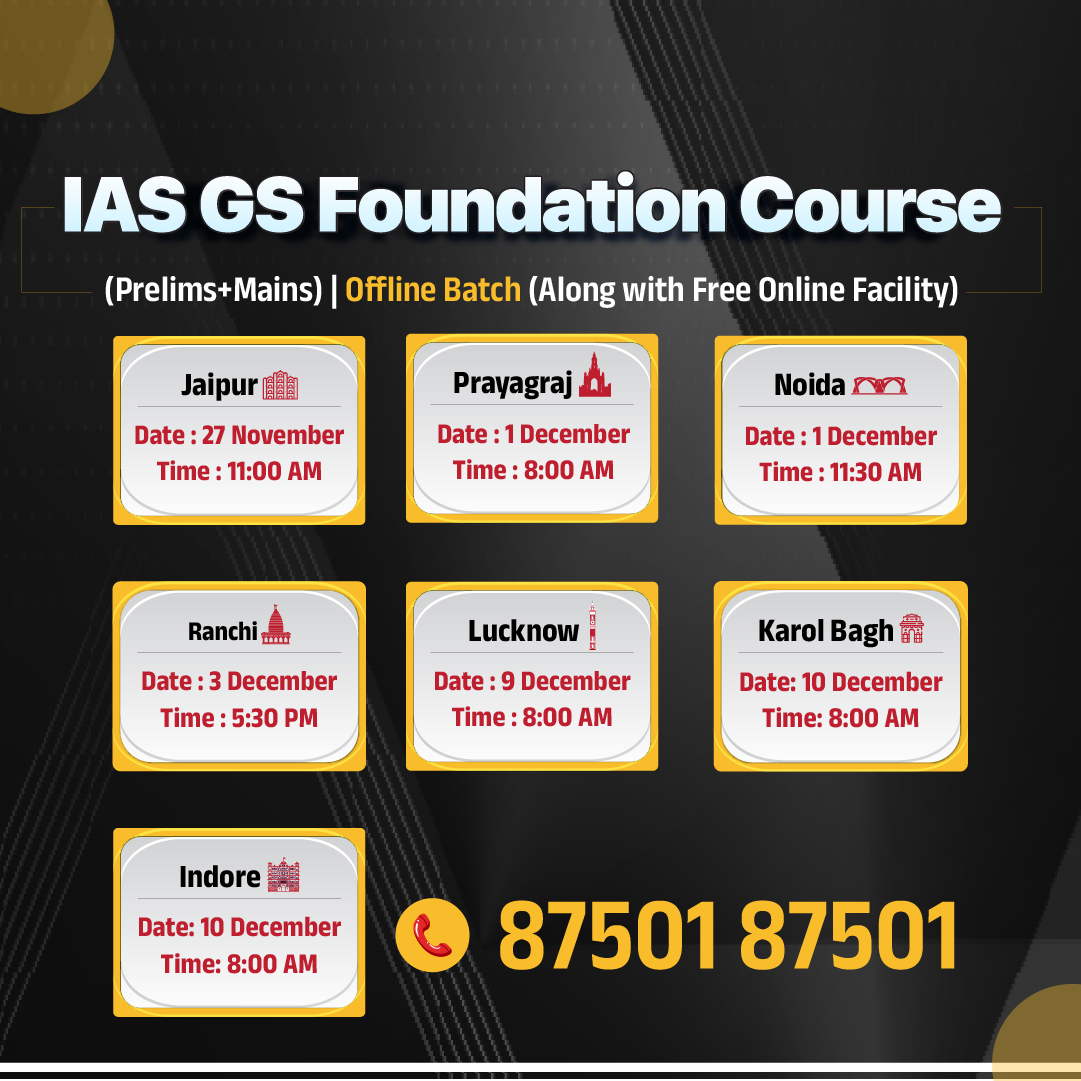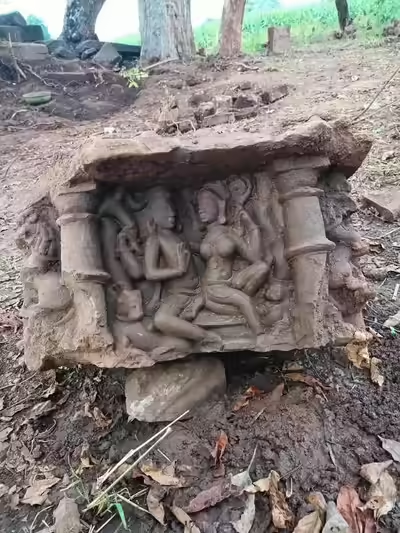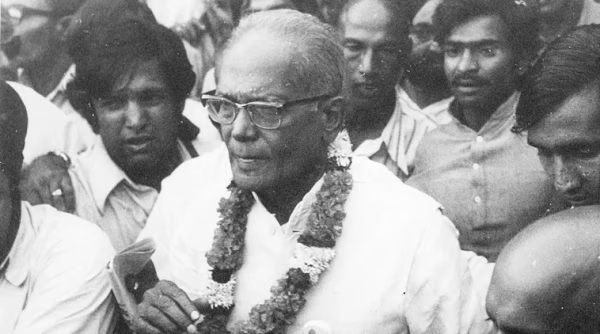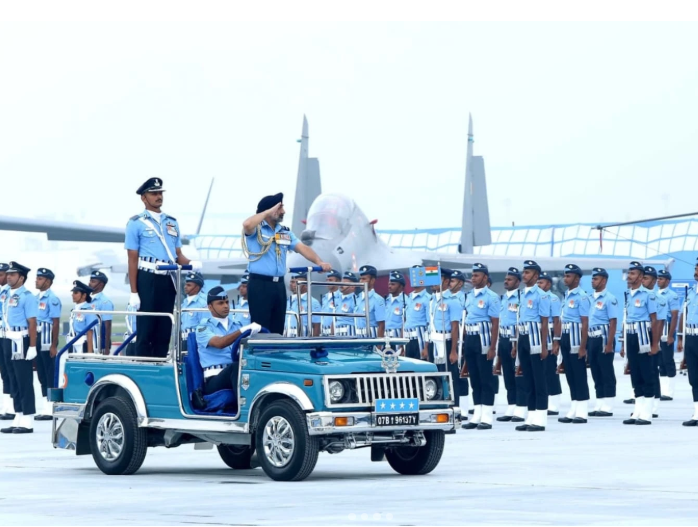Madhya Pradesh Switch to Hindi
10th-Century Idols Unearthed in MP
Why in News?
Archaeologists have unearthed 15 rare 10th-11th century idols in Doni village, Damoh, Madhya Pradesh, showcasing the rich temple art of the Kalachuri era.
- The discovery has stunned experts and could rewrite the history of medieval temple art in central India.
Key Points
- About: A team led by PC Mahobiya, deputy director of the State Archaeology Department, North Zone, Gwalior, has been working since April 2025 to excavate the site.
- The idols, carved from red sandstone, are a mix of well-preserved deities, including rare representations like Ardhanarishvara and Narasimha.
- The discovery of exceptionally well-preserved artefacts has garnered significant attention from historians and scholars, marking a valuable contribution to Madhya Pradesh's cultural heritage.
- Discovered Artefacts:
- Narasimha Idol: A half-human, half-lion Narasimha idol was found, with the upper portion intact but the lower half damaged.
- Ardhanarishvara Idol: A unique composite form of Shiva and Parvati, with Nandi carrying Parvati, which is extremely rare.
- Other Idols: Additional idols include Brahma, Vayu, Nayika, and Parvati, each in remarkable detail.
- Significance: These idols provide a glimpse into the temple art and religious symbolism of the Kalachuri era, adding depth to the understanding of medieval Hindu sculpture.
- The uniqueness of the Ardhanarishvara idol, where Nandi is shown carrying Parvati, challenges traditional representations and opens new avenues for academic exploration.
- The red sandstone sculptures, some potentially worth crores in the international antiquities market, are significant not only for their cultural value but also for their monetary worth, raising concerns about preservation.
Kalachuri Dynasty
- Origin of the Kalachuris: The Kalachuris, also known as the Haihayas, are believed to have originated from a Kshatriya tribe.
- They are mentioned in Brahmanical epics and Puranas. The early Kalachuris, or those of Mahishmati, ruled regions in present-day Gujarat, Madhya Pradesh, and Maharashtra.
- Early Rulers: Notable early rulers include Krishnaraja, Shankaragana, and Buddharaja (550-620 CE). Despite their initial rise, the Kalachuris struggled against the powerful neighboring kingdoms of the Chalukyas of Vatapi and the Maitrakas of Valabhi, leading to their decline.
- Matrimonial Alliances: To strengthen their position, the Kalachuris maintained matrimonial relations with the eastern and western Chalukyas. These alliances played a significant role in their political survival, even after military defeats.
- Kalachuris of Chedi: The Kalachuris of Chedi, with their capital at Tripuri (now Jabalpur), rose to prominence in the 9th century CE.
- Kokalla I was the first significant ruler of this branch, known for defeating Pratihara emperor Bhoja I and Rashtrakuta king Krishna II, which led to matrimonial relations with the Rashtrakutas.
- Royal Patronage to Religion: The Kalachuris, especially Yuvaraja I, were strong patrons of Brahmanical religion, with a special focus on Shaivism.
- They made numerous land grants for religious establishments, and Yuvaraja I supported Shaivite saints like Durvasa, who established the Golakimatha monastery.
- The Kalachuris supported diverse religious practices, including Shaivism, Shakti worship, Jainism, and Buddhism.
- The Yogini cult, prevalent during this time, is seen in temples at Khajuraho, Bheraghat, and Shahdol.
Uttar Pradesh Switch to Hindi
Mailani-Nanpara Rail Track Declared Heritage Route
Why in News?
The 171km Mailani-Nanpara metre gauge railway line, passing through the Dudhwa National Park, Uttar Pradesh, has been declared a heritage route by Indian Railways.
Key Points
- About: The Mailani-Nanpara metre gauge railway line was built over 130 years ago by the British in several phases and features 16 stations, 71 bridges, and unique dual-gauge stations at Mailani and Nanpara.
- First Preserved Meter-Gauge Line: Mailani-Dudhwa is the first meter-gauge line in the North Eastern Railway(NER) to be preserved, maintaining its narrow gauge instead of converting it to broad gauge.
- Sustainable Tourism Model: NER plans to preserve traditional railway equipment at key stations like Mailani and Dudhwa, while also maintaining metre-gauge diesel engines at dedicated facilities.
- Heritage Tourism Launch: The heritage tourism initiative started in 2022 with the launch of the Mailani-Bichia AC tourist coach, inaugurated by Railway Minister Ashwini Vaishnaw.
- The new heritage designation is expected to boost eco-tourism, improve regional connectivity, and support local livelihoods.
- Other Key Developments:
- With the opening of the Lakhimpur-Mailani broad gauge section, extending to Pilibhit, Mailani Junction now serves as a critical link between heritage and modern railway infrastructure.
- The Bahraich to Nepalganj Road section via Nanpara Junction was also recently commissioned as a fully electric broad-gauge track, further enhancing regional connectivity.
- In April 2025, a special heritage AC tourist train operated from Mailani to Dudhwa as part of the “Station Mahotsav” celebrations, commemorating 140 years of Gorakhpur Junction.
Dudhwa National Park
- Establishment: Dudhwa National Park, situated in Lakhimpur Kheri district of Uttar Pradesh along the Indo–Nepal border, was established in 1977 as a protected area covering 490 sq. km.
- To protect the swamp deer (barasingha) population from extinction, the Government of Uttar Pradesh declared the area a wildlife sanctuary in 1958.
- The sanctuary was upgraded to national park status in 1977, with additional areas incorporated to strengthen wildlife protection measures.
- The park was also declared a tiger reserve in 1987, as the area was found to have a significant population of Bengal tigers.
- Biodiversity: The park hosts a rich diversity of fauna, including Bengal tigers, leopards, elephants, sloth bears, Indian rhinoceros, and over 450 bird species. Its ecosystem includes grasslands, swamps, and dense sal forests typical of the Terai region.
- Conservation: Major initiatives include habitat restoration and reintroduction of endangered species like swamp deer and barasingha.
- Eco-tourism programs have been developed to promote sustainable tourism and support the local economy while conserving the park’s biodiversity.
Bihar Switch to Hindi
Death Anniversary of Jaiprakash Narayan
Why in News?
On 8th October 2025, the Vice-President of India, C. P. Radhakrishnan, paid floral tributes to Jaiprakash Narayan at Samvidhan Sadan on the occasion of his death anniversary.
Key Points
- About: Jayaprakash Narayan was born on 11th October 1902 in Sitabdiara, Bihar, to Phool Rani Devi and Harshu Dayal, and married Prabhabati, the daughter of lawyer and Congress leader Braja Kishore Prasad, in 1920.
- Education: J.P. studied at Patna Collegiate School and later joined Patna College, but left due to British funding and enrolled in Bihar Vidyapith, a non-cooperation institution.
- From 1922 to 1929, he pursued higher studies in the U.S. at multiple universities, focusing on Sociology and influenced by Marxist-Leninist ideas, particularly those of M.N. Roy.
- Return to India: Upon returning to India in 1929, he joined the Indian National Congress (INC) and participated in the Lahore session, where the resolution for Complete Independence (Poorna Swaraj) was passed. Despite his Marxist beliefs, he admired Gandhiji’s leadership.
- Involvement in the Civil Disobedience Movement: Jayaprakash joined the Civil Disobedience Movement and organised an underground office. He was arrested in September 1932 and imprisoned in Nasik Central Jail, where he met future prominent leaders and further strengthened his socialist ideals.
- Formation of the Congress Socialist Party (CSP): In Nasik Jail, Jayaprakash and others formed the Congress Socialist Party (CSP) to infuse socialist ideals into the freedom movement, advocating for mass struggle over electoral participation.
- Quit India Movement and Arrests: During the Quit India Movement in 1942, Jayaprakash escaped from Hazaribagh Central Jail and formed the “Azad Dasta” in Nepal to fight British rule. He was re-arrested in 1943, endured harsh treatment, and was released in 1946 due to widespread public pressure, earning the title "The Heart of Indians."
- Post-Independence Contributions: After India gained independence, Jayaprakash joined the Sarvodaya Movement, led by Vinoba Bhave. He donated his land for the Bhoodan Movement and advocated for social reforms in rural India.
- Sampurna Kranti and Political Legacy: In the 1970s, he led the call for "Sampurna Kranti" (Total Revolution) to address corruption and democratic decay.
- His efforts led to the formation of the Janata Party in 1977, which ousted Indira Gandhi from power. He passed away on 8th October 1979, leaving a lasting impact on India’s political landscape.
Rajasthan Switch to Hindi
Rajasthan to Become India’s Largest Cement Producer
Why in News?
Rajasthan is on track to surpass Andhra Pradesh in cement production and become the country's largest cement-producing state.
Key Points
- Expansion Plans in Jaisalmer: Jaisalmer, a desert district, is set to emerge as a major cement production hub with the establishment of six new cement plants between 2026 and 2029.
- Historically known for its tourism-driven economy, Jaisalmer has seen a shift over the past 15 years towards large-scale investments in solar and wind energy projects. The addition of cement manufacturing will diversify the district's industrial base.
- Investment Overview: The total investment in these plants will exceed Rs 17,000 crore. These new plants are expected to add 16 million tonnes of cement capacity to Rajasthan’s current production.
- Current Status: Andhra Pradesh currently leads with an installed capacity of 62.5 million tonnes, followed by Rajasthan with 55 million tonnes.
- Presently, Chittorgarh is Rajasthan’s leading cement producer, hosting major plants from some of the country’s biggest cement manufacturers.
- The district of Nagaur is also witnessing the construction of new cement plants, which will further boost Rajasthan's cement production.
- Limestone Reserves: Rajasthan is home to 2.5 billion tonnes of limestone reserves, which account for about 26% of India’s total proven limestone deposits. This makes the state an ideal location for cement production.
- Rajasthan’s proximity to major northern and western markets, along with a robust transportation network, further strengthens the viability of the cement industry in the state.
National Current Affairs Switch to Hindi
World Habitat Day
Why in News?
The Ministry of Housing and Urban Affairs (MoHUA) celebrated World Habitat Day 2025 at Vigyan Bhawan, New Delhi, with the theme "Urban Solutions to Crisis."
- The event highlighted the importance of making cities more resilient, inclusive, and sustainable in addressing challenges like climate change, migration, and rapid urbanisation.
Key Points
- Background: In 1985, the United Nations designated the first Monday of October each year as World Habitat Day. World Habitat Day was first celebrated in 1986, with the theme "Shelter is My Right", and Nairobi was the host city.
- Objective: This day serves to reflect on the state of our habitats and emphasises the fundamental right of all individuals to have access to adequate shelter.
- Theme 2025: The theme for World Habitat Day 2025, observed on 6th October, is ‘Urban Crises Response,’ focusing on addressing various crises, such as climate change and conflicts, that contribute to inequality in urban areas, while promoting effective crisis response tools and approaches.
Scroll of Honour Award
- Launched by the United Nations Human Settlements Programme in 1989, the UN-Habitat Scroll of Honour Award is the most prestigious global recognition for human settlements.
- This award acknowledges exceptional contributions in areas such as:
- Shelter provision (adequate, affordable housing).
- Highlighting the plight of the homeless.
- Leadership in post-conflict reconstruction.
- Improving urban life quality and human settlements.
National Current Affairs Switch to Hindi
93rd Air Force Day
Why in News?
The Air Chief Marshal Amar Preet Singh conveyed his greetings to the nation on the 93rd Air Force Day, honouring the brave air warriors who have protected the nation's skies with sacrifice, dedication, and professionalism.
Key Points
- About: Celebrated annually on 8th October to honour the establishment of the Indian Air Force (IAF) on 8th October 1932.
- Early Years: The IAF's first operational flight took place on 1st April 1933, beginning a vision of air power that has shaped India’s defence over the decades.
- From a small force with limited personnel and aircraft, the IAF has grown to become the world’s fourth-largest air force, involved in various military and humanitarian missions.
- Motto: The motto of IAF is Touch the sky with Glory (Nabhah Sparsam Diptam), which has been taken from the eleventh chapter of the Bhagavad Gita.
- Theme: The 2025 theme is centred on the force's contribution to Operation Sindoor.
- 2025 Celebrations: This year's celebrations featured a farewell to the iconic MiG-21, a grand flypast with Rafale, Su-30MKI, C-17 Globemaster, Apache Guardian, and others, along with parades, air shows, and exhibitions showcasing the IAF's technological advancements and operational readiness.
- The parade took place at Hindon Air Base, Uttar Pradesh, showcasing technological advancements and operational readiness.
- The restored Hindustan Trainer-2 (HT-2) aircraft, the first indigenously built IAF aircraft, was also displayed for the first time as part of the Heritage Flight.
- The traditional flypast and aerial display are scheduled to be held in Guwahati on 9th November, marking the culmination of this year’s Air Force Day celebrations.

.gif)

.png)
















.png)


.jpg)



 PCS Parikshan
PCS Parikshan





